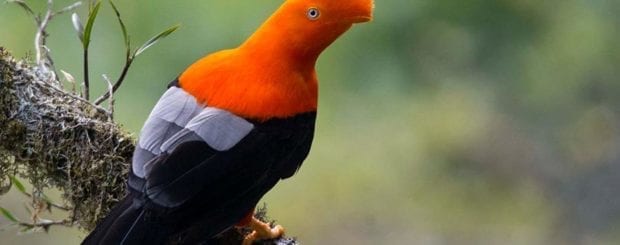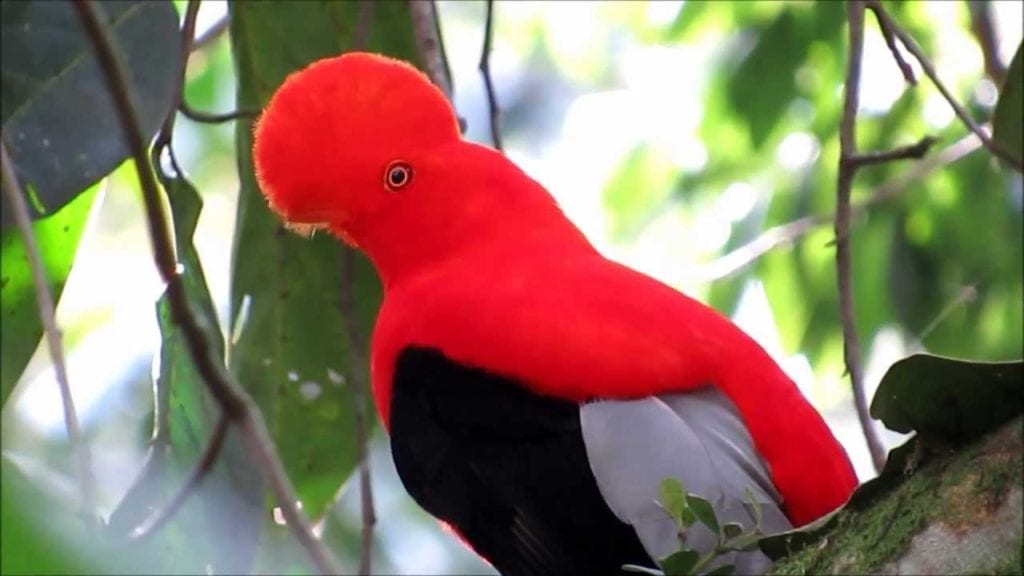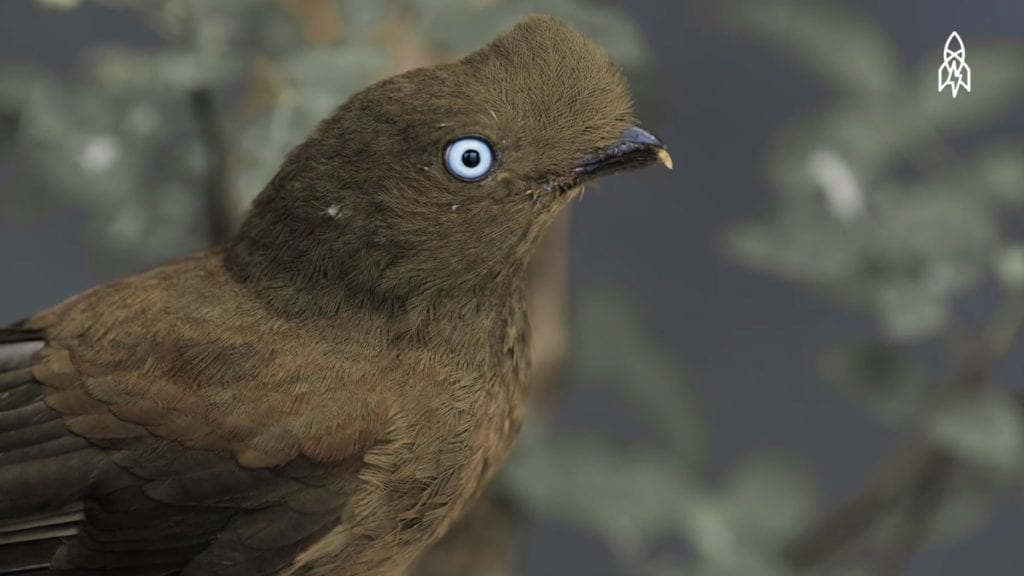The National Bird of Peru
James Bustamante is Native to New York but born to Peruvian parents. He has been traveling throughout Latin America since early 2003 and finally made his home in Peru. James has made his way by eating and traveling through almost every country in Central and South America.
Last Updated on March 10, 2021 by James Bustamante
The “Tunki” or better known in English as the cock of the rocks is the national bird of Peru. This small and colorful South American bird makes its home in several locations in the Andean regions of the continent. This bird is as emblematic to Peruvians as the Peruvian flag, the Llama, and even the Machu Picchu hike. Let’s take a look at this interesting species.
Name and Origin
The cock of the rock is an Andean species that is sometimes called the “Tunki”, this is the native world for the bird in the Quechua, the native and ancient language of the Incas. It is a good-sided passerine bird that belongs to the cotinga family, these are native to the cloud forests of South American. The Andean cock of the rock has four subspecies and a close relative in the Guiana cock of the rock.
Scientific name: Rupicola peruvianus
Higher classification: Cock-of-the-rock
Travelers Notes: for This article we will be referring to this species of bird by it’s three common names: Tunki, Cock of the Rocks and the National bird of Peru.
Size and Weight of The Peruvian National Bird
We first find the description of the national bird of Peru by the English ornithologist Dr. John Latham in the year 1790. He classified the cock of the rocks under the Cotingidae as part of a family of tropical fruit-eating birds from the tropical forests. The name cock of the rocks name comes from where these birds would typically inhabit. The Tunki will make nests off clicks, within rock walls.
This bird can be described as the size of a small chicken. It is approximately 13 inches long (32 cm) and weighs close to half a pound (9.3 oz, 265 grams). The males are just a bit larger than the females weighing in at a little over half a pound.
Cock of The Rock Distribution
The national bird of Peru can be found in the cloud forests that cover pockets of the Andes mountain range. The cock of the rocks has been able to survive and in some cases flourish in Venezuela, Colombia, Ecuador, Bolivia, and of course in Peru.
The Tunki can like to make it’s home lower to what we would consider middle elevations, this varies from 1,600 – 7,900 feet (500 – 2,400 meters) above sea level. The cock of the rocks is a shy bird so don’t expect to see several of them all at once, they can be loud during mating season, making them easier to spot.
Cock of The Rock Mating Display
The male specimen of this South American bird is polygamous by nature. They will not have anything to do with the nesting or rearing of the young chicks, their job is done as soon as mating is finished. The make Tunki will use its energy in displaying elaborate rituals showing off the brightly colored plumage to attract more females.
The displays will always be in a group scenario, several males will gather in one spot and compete for the female. There have been studies that show the male cock of the rocks will have a more intense display for the females depending on how bright the day is. The greater the daylight the more intense the courting process will be.
During mating season, You will find males breaking up into pairs in order to have a type of “confrontation display” with each other. The national birds of Peru will face each other and perform a bowing motion, they will jump and flap their wings as well.
If you listen carefully during these displays, you will also hear the Tunki snapping their bills as they grunt and squawk at each other.
If an interested female happens to come close to the dueling pair, the displays will intensify into a frenzy of sounds and dances. The cock of the rocks breeding schedule will vary depending on the country but it is usually from February to July.
Male and Female Differences
As with several species of birds, the Andean rock of rock shows a strong sexual dimorphism. This means that one of the sexes of the species, in this case, the male, has obvious physical characteristics which differ from the other sex. The male cock of the rocks has a very bright plumage with an orange tone as well as a peculiar rounded crest.
The female of the species has a much darker color and does not show the same extravagant plumage as its male counterpart. The color the female tunkis represent though is still beautiful and it is practical.
Since they do all of the raisings when it comes to the chicks, they need to blend into the walls and cliffs where they nest. The beaks on the male are yellowish and on the female, they have a more brown tone with the tip having a bit of yellow as well.
The male version of the national bird of Peru can be sometimes found in large numbers, all competing with each other for the females. They will bob their heads and hop around the floor while showing off their colorful, orange feathers.
This bird of Peru is not the best father figure, after mating the female will raise the young chick on her own.
The Tunki Diet
The types of fruit the cock of the rocks will commonly consume usually belong to three plant families. The Lauraceae, Annonaceae, and Rubiaceae. This includes berries, Chirimoyas (custard apples), prickly fruit, and several others.
The “Tunki” enjoys fresh fruit as a base for their diet but will also eat insects, frogs, lizards, and even small rodents if they can catch them. You can find these birds throughout the cloud-forest in the Andes mountain range, which’s around 100,000 square miles (260,000 square km). They are a protected species in Peru so hunting or selling them is illegal.
The National Bird of Peru Nesting Practices
Just like we mentioned before, the nest is built and maintained entirely by the female cock of the ricks. The nests are built with mud on cave entrances near cliffs or ravines. In order to build these nests, the female tunki will use their saliva mixed with mud and plant matter.
The shape of the female bird will have a concave, cup-like structure where they will lay just two eggs. The incubation period for the Tunki eggs will range from 25 – 28 days on average.
The Tunki’s Environmental Impact
The Andean cock of the rocks has a large impact on their environment. This species of bird love fruits that have plenty of seeds so they have a large impact by spreading these around while feeding. The nests that the national bird of Peru leaves behind also play a big role. The abandoned nests will many times serve other species of birds that don’t have the same home-building abilities as the Tinki’s do.
Predators of the Tunki
Since they are around the size of a small chicken, the cock of the rocks will attract larger predators than other, smaller songbirds. The predators have attracted to the Tunki community thanks to the male cock of the rocks’ color display and their mating call. The national bird of Peru will usually worry about haws, eagles, owls, jaguars, pumas, boa constrictors and even the elusive ocelot will hunt them.
Conclusion
This Andean bird is rather elusive but can be easier to spot during mating season. If you wish to try and find them while we visit the cloud forest on our way to Machu Picchu, make sure to let us know and we will gladly put this amazing trip together for you. Contact our travel advisers today for more details and for Machu Picchu reservations as well.
Frequently Asked Questions About the Peruvian National Bird
What is the national bird of Peru?
The national bird of Peru is the Cock of the Rocks which is also called the Tunki in its native Quechua language.
Where does the cock of the rocks live?
You can find this Andean bird in the cloud forests of South America such as the one found near Machu Picchu.
Are cocks of the rock a protected species?
They are not an endangered species but you are not allowed to hunt them or keep them as pets in Peru.
Does the national bird of Peru fly?
Yes the Tunki or cock of the rock can fly.
















